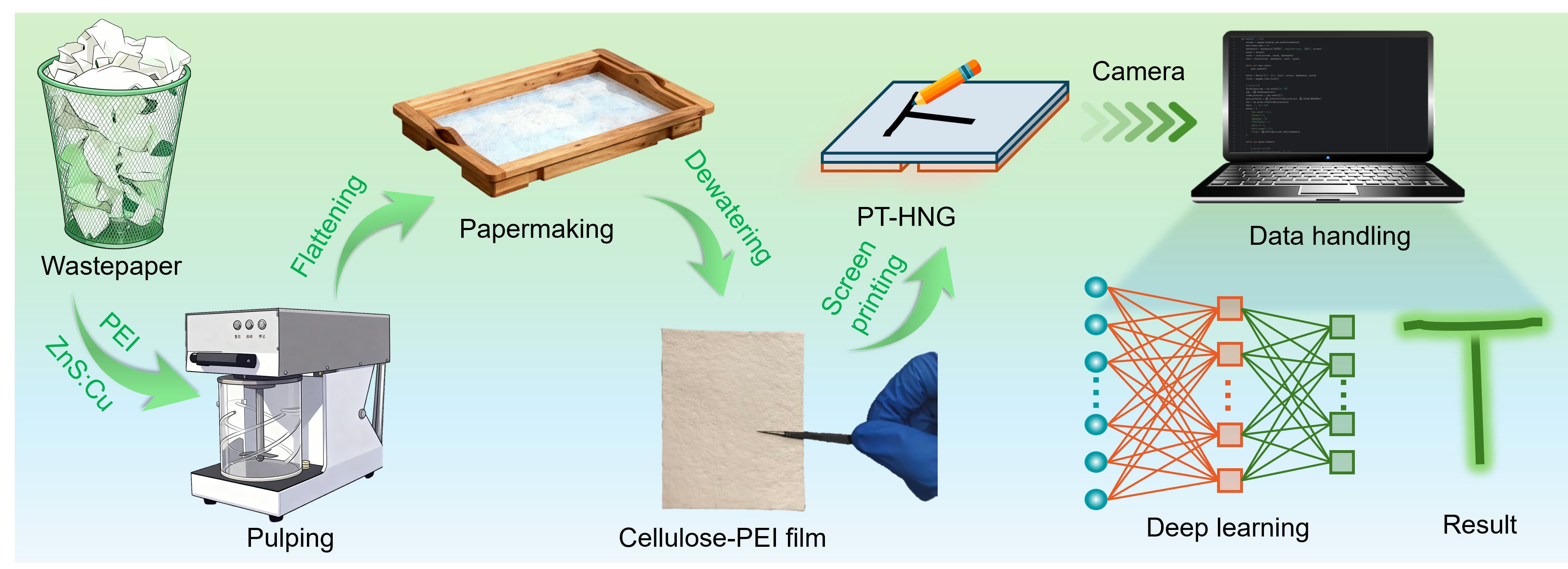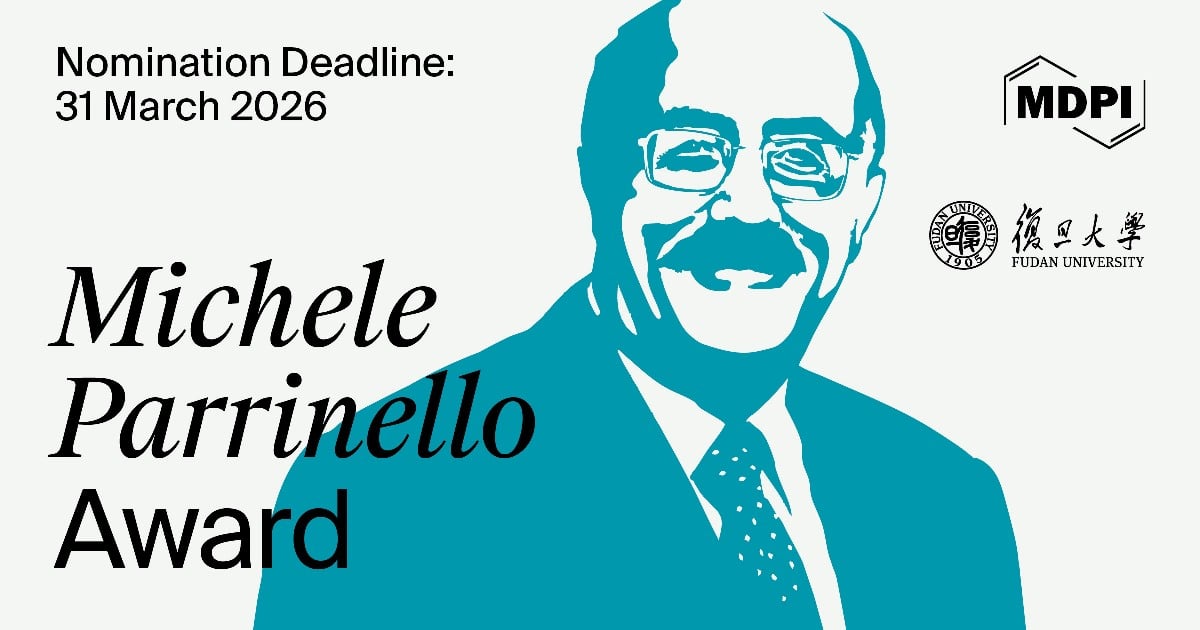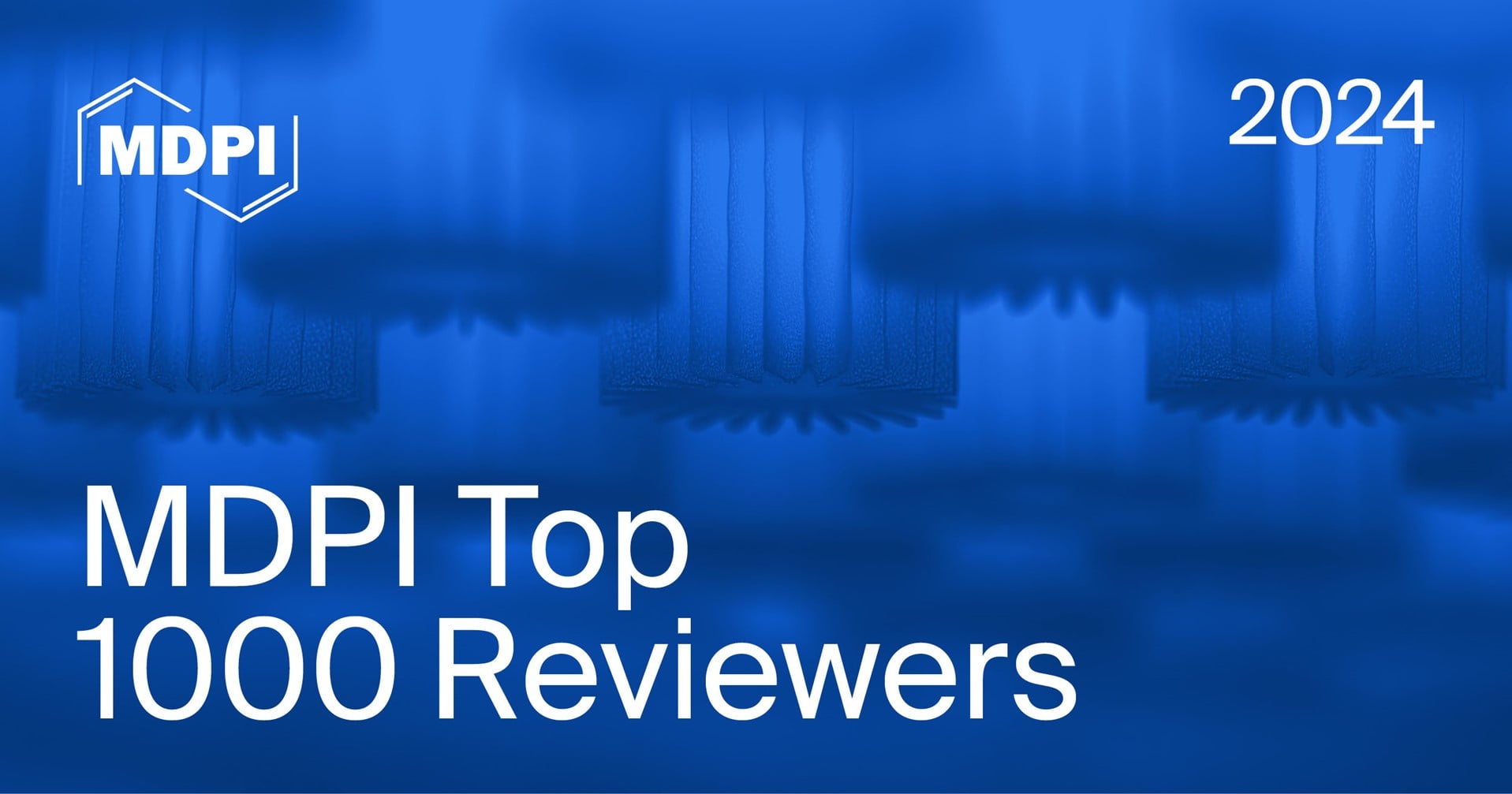-
 Electronic Structure Regulation Enhances the Urea Oxidation Reaction Performance of the NiCo-MOF Catalyst
Electronic Structure Regulation Enhances the Urea Oxidation Reaction Performance of the NiCo-MOF Catalyst -
 Progress in Cellulose-Based Polymer Ionic Conductors: From Performance Optimization to Strain-Sensing Applications
Progress in Cellulose-Based Polymer Ionic Conductors: From Performance Optimization to Strain-Sensing Applications -
 Multivalent Metal-Ion Batteries: Unlocking the Future of Post-Lithium Energy Storage
Multivalent Metal-Ion Batteries: Unlocking the Future of Post-Lithium Energy Storage -
 A Layered Electrode Solid–Oil Triboelectric Nanogenerator for Real-Time Monitoring of Oil Leakage and Emulsification
A Layered Electrode Solid–Oil Triboelectric Nanogenerator for Real-Time Monitoring of Oil Leakage and Emulsification -
 Liquid Metal Nanoenergy Systems: Progress and Challenges
Liquid Metal Nanoenergy Systems: Progress and Challenges
Journal Description
Nanoenergy Advances
Nanoenergy Advances
is an international, peer-reviewed, open access journal on all aspects of nanoenergy published quarterly online by MDPI.
- Open Access— free for readers, with article processing charges (APC) paid by authors or their institutions.
- High Visibility: indexed within ESCI (Web of Science), Scopus and other databases.
- Journal Rank: CiteScore - Q1 (Materials Science (miscellaneous))
- Rapid Publication: manuscripts are peer-reviewed and a first decision is provided to authors approximately 33.9 days after submission; acceptance to publication is undertaken in 6.8 days (median values for papers published in this journal in the first half of 2025).
- Recognition of Reviewers: APC discount vouchers, optional signed peer review, and reviewer names published annually in the journal.
Latest Articles
Cellulose-Based Sustainable Photo-Triboelectric Hybrid Nanogenerator for High-Performance Energy Harvesting and Smart Control Systems
Nanoenergy Adv. 2026, 6(1), 1; https://doi.org/10.3390/nanoenergyadv6010001 - 23 Dec 2025
Abstract
With the advancement of Internet of Things (IoT) technology, flexible sensors with dual optoelectronic sensing modes have emerged as a research hotspot for next-generation smart devices, further driving the urgent demand for environmentally friendly functional materials. Here, we innovatively integrated wastepaper recycling technology
[...] Read more.
With the advancement of Internet of Things (IoT) technology, flexible sensors with dual optoelectronic sensing modes have emerged as a research hotspot for next-generation smart devices, further driving the urgent demand for environmentally friendly functional materials. Here, we innovatively integrated wastepaper recycling technology with a polyethyleneimine (PEI)-assisted pulping strategy to develop a novel cellulose-based sustainable photo-triboelectric hybrid nanogenerator (PT-HNG). Based on the working mechanism of a freestanding triboelectric nanogenerator (TENG), the PT-HNG can directly convert pressure stimuli into electrical energy and triboelectrification-induced electroluminescence (TIEL) signals. It achieves luminescence brightness of 0.06 mW cm−2 (3.84 cd m−2) and simultaneously delivers excellent electrical output performance (172.4 V, 6.36 μA, 43.7 nC) under sliding motion. More importantly, compatible with existing industrial papermaking processes, the PT-HNG is scalable for large-scale production. By combining PT-HNG with deep learning algorithms, a handwritten e-book system based on trajectory recognition was constructed, with a recognition accuracy of up to 95.5%. In addition, real-time intelligent control of PowerPoint presentations via PT-HNG was demonstrated. This study provides a new pathway for converting wastepaper into intelligent products and presents a novel idea for the interdisciplinary integration of the circular economy and advanced electronic technology.
Full article
(This article belongs to the Special Issue Hybrid Energy Storage Systems Based on Nanostructured Materials)
►
Show Figures
Open AccessArticle
Comparative Performance Analysis of Fluoride-Decorated Li1.2Ni0.13Co0.13Mn0.54O2 as Cathode Materials for Li Batteries
by
Ashraf E. Abdel-Ghany, Somia M. Abbas, Ahmed M. Hashem, Alain Mauger and Christian M. Julien
Nanoenergy Adv. 2025, 5(4), 23; https://doi.org/10.3390/nanoenergyadv5040023 - 17 Dec 2025
Abstract
►▼
Show Figures
This work deals with the comparative analysis of fluoride coatings, i.e., 5 wt.% AlF3 and LiF, applied as surface layer of Li-rich Li1.2Ni0.13Co0.13Mn0.54O2 (LNCM) layered oxides synthesized via facile and cost-effective sol–gel route.
[...] Read more.
This work deals with the comparative analysis of fluoride coatings, i.e., 5 wt.% AlF3 and LiF, applied as surface layer of Li-rich Li1.2Ni0.13Co0.13Mn0.54O2 (LNCM) layered oxides synthesized via facile and cost-effective sol–gel route. The detailed structural and morphological characterizations demonstrate that AlF3 and LiF deposits have a pivotal role in enhancing the electrochemical properties of LNCM. These electrochemical properties include galvanostatic charge–discharge (GCD), differential capacity (dQ/dV), electrochemical impedance spectroscopy (EIS), and area-specific impedance (ASI). A much lower decay of the discharge capacity of 0.22 and 0.25 mAh g−1 per cycle was obtained for AlF3- and LiF-coated LMNC, respectively, after 100 charge/discharge cycles at 0.1 C compared with 0.42 mAh g−1 per cycle for pristine LNCM. Results evidence the non-evolution of the charge transfer resistance, enhanced lithium-ion kinetics and stabilization of electrode/electrolyte interface during cycling.
Full article
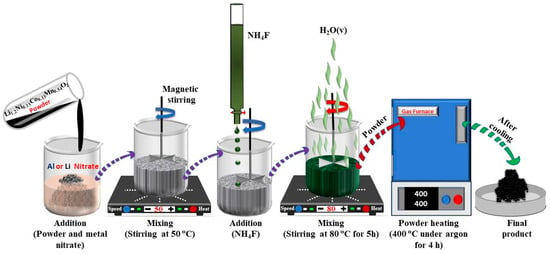
Figure 1
Open AccessArticle
Layer-by-Layer Hybrid Film of PAMAM and Reduced Graphene Oxide–WO3 Nanofibers as an Electroactive Interface for Supercapacitor Electrodes
by
Vanderley F. Gomes Junior, Danilo A. Oliveira, Paulo V. Morais and José R. Siqueira Junior
Nanoenergy Adv. 2025, 5(4), 22; https://doi.org/10.3390/nanoenergyadv5040022 - 12 Dec 2025
Abstract
Tungsten oxide (WO3) nanostructures have emerged as promising electroactive materials due to their high pseudocapacitance, structural versatility, and chemical stability, while reduced graphene oxide (rGO) provides excellent electrical conductivity and surface area. The strategic combination of these nanomaterials in hybrid electrodes
[...] Read more.
Tungsten oxide (WO3) nanostructures have emerged as promising electroactive materials due to their high pseudocapacitance, structural versatility, and chemical stability, while reduced graphene oxide (rGO) provides excellent electrical conductivity and surface area. The strategic combination of these nanomaterials in hybrid electrodes has gained attention for enhancing the energy storage performance of supercapacitors. In this work, we report the fabrication and electrochemical performance of nanostructured multilayer films based on the electrostatic Layer-by-Layer (LbL) self-assembly of poly (amidoamine) (PAMAM) dendrimers alternated with tungsten oxide (WO3) nanofibers dispersed in reduced graphene oxide (rGO). The films were deposited onto indium tin oxide (ITO) substrates and subsequently subjected to electrochemical reduction. UV-Vis spectroscopy confirmed the linear growth of the multilayers, while atomic force microscopy (AFM) revealed homogeneous surface morphology and thickness control. Electrochemical characterization by cyclic voltammetry (CV) and galvanostatic charge–discharge (GCD) revealed a predominantly electrical double-layer capacitive (EDLC) behavior. From the GCD measurements (PAMAM/rGO-WO3)20 films achieved an areal capacitance of ≈2.20 mF·cm−2, delivering an areal energy density of ≈0.17 µWh·cm−2 and an areal power density of ≈2.10 µW·cm−2, demonstrating efficient charge storage in an ultrathin electrode architecture. These results show that the synergistic integration of PAMAM dendrimers, reduced graphene oxide, and WO3 nanofibers yields a promising strategy for designing high-performance electrode materials for next-generation supercapacitors.
Full article
(This article belongs to the Special Issue Hybrid Energy Storage Systems Based on Nanostructured Materials)
►▼
Show Figures

Graphical abstract
Open AccessEditorial
Mechanism-Guided Materials and Structural Design for High-Performance Nanogenerators
by
Ya Yang
Nanoenergy Adv. 2025, 5(4), 21; https://doi.org/10.3390/nanoenergyadv5040021 - 10 Dec 2025
Abstract
The advancement of sensor systems that facilitate our daily lives relies on small, disposable batteries, which contribute to environmental pollution [...]
Full article
(This article belongs to the Special Issue Celebrating the 18th Anniversary of the Invention of the First Nanogenerators)
Open AccessArticle
Laser-Fabricated GO/ZIF-67 Hybrid Nanocomposites for High-Performance 3D-Printed Supercapacitors
by
Mahshid Mokhtarnejad, Erick L. Ribeiro, Karen Y. Patino Jaimes, Mariana Milano-Benitez and Bamin Khomami
Nanoenergy Adv. 2025, 5(4), 20; https://doi.org/10.3390/nanoenergyadv5040020 - 4 Dec 2025
Abstract
This study introduces a modified Laser Ablation Synthesis in Solution (LASiS), a surfactant-free and rapid synthesis approach that enables uniform MOF nucleation on graphene oxide (GO) and precise control over crystallinity, for fabricating graphene oxide (GO)-integrated cobalt-based ZIF-67 hybrid nanocomposites tailored for supercapacitor
[...] Read more.
This study introduces a modified Laser Ablation Synthesis in Solution (LASiS), a surfactant-free and rapid synthesis approach that enables uniform MOF nucleation on graphene oxide (GO) and precise control over crystallinity, for fabricating graphene oxide (GO)-integrated cobalt-based ZIF-67 hybrid nanocomposites tailored for supercapacitor applications. By tuning LASiS parameters, we precisely controlled framework size, morphology, and crystallinity, enabling sustainable and scalable production. The incorporation of GO during synthesis markedly enhances the uniform dispersion of ZIF-67 frameworks, minimizing aggregation and establishing interconnected conductive pathways via strong
(This article belongs to the Special Issue Hybrid Energy Storage Systems Based on Nanostructured Materials)
►▼
Show Figures

Graphical abstract
Open AccessArticle
Upcycling Medical Tablet Blister Waste into High-Performance Triboelectric Nanogenerators for Sustainable Energy Harvesting
by
Vikram Lakshmi Suneetha, Velpula Mahesh, Khanapuram Uday Kumar and Rajaboina Rakesh Kumar
Nanoenergy Adv. 2025, 5(4), 19; https://doi.org/10.3390/nanoenergyadv5040019 - 1 Dec 2025
Abstract
►▼
Show Figures
The increasing accumulation of medical waste, especially discarded pharmaceutical blister packs, poses both environmental risks and missed opportunities for resource recovery. In this work, we demonstrate, for the first time, the direct upcycling of tablet blister waste into a potential frictional layer in
[...] Read more.
The increasing accumulation of medical waste, especially discarded pharmaceutical blister packs, poses both environmental risks and missed opportunities for resource recovery. In this work, we demonstrate, for the first time, the direct upcycling of tablet blister waste into a potential frictional layer in triboelectric nanogenerators (TENGs). The polymer structure of blister packs, combined with Silicone rubber as a counter frictional layer, enabled the fabrication of durable TENG devices (TS-TENGs). Systematic electrical testing revealed that the TS-TENG achieved an open-circuit voltage of approximately 300 V, a short-circuit current of about 40 μA, and a peak power density of 3.54 W/m2 at an optimal load resistance of 4 MΩ. The devices maintained excellent stability over 10,000 mechanical cycles, confirming their durability. Practical demonstrations included powering 240 LEDs, four LED lamps, and portable electronic devices, such as calculators and hygrometers, through capacitor charging. This study shows that not only can tablet blister waste be used as a triboelectric material but it also presents a sustainable method to reduce pharmaceutical waste while advancing self-powered systems. The approach offers a scalable and low-cost means to integrate medical waste management with renewable energy technologies.
Full article
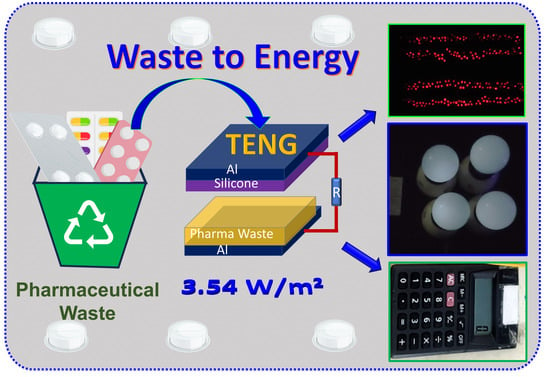
Graphical abstract
Open AccessArticle
An AI-Driven TiO2-NiFeC-PEM Microbial Electrolyzer for In Situ Hydrogen Generation from POME Using a ZnO/PVA-EDLOSC Nanocomposite Photovoltaic Panel
by
Ataur Rahman Md, Mohamad Qatu, Labib Hasan, Rafia Afroz, Mehdi Ghatus and Sany Ihsan
Nanoenergy Adv. 2025, 5(4), 18; https://doi.org/10.3390/nanoenergyadv5040018 - 26 Nov 2025
Abstract
Electrolysis and biological processes, such as fermentation and microbial electrolysis cells, offer efficient hydrogen production alongside wastewater treatment. This study presents a novel microbial electrolyzer (ME) comprising a titanium dioxide (TiO2) anode, a nickel–iron–carbon (NiFeC) cathode, and a cellulose nanocrystal proton
[...] Read more.
Electrolysis and biological processes, such as fermentation and microbial electrolysis cells, offer efficient hydrogen production alongside wastewater treatment. This study presents a novel microbial electrolyzer (ME) comprising a titanium dioxide (TiO2) anode, a nickel–iron–carbon (NiFeC) cathode, and a cellulose nanocrystal proton exchange membrane (CNC-PEM) designed to generate hydrogen from palm oil mill effluent (POME). The system is powered by a 12 V electric double-layer organic supercapacitor (EDLOSC) integrated with a ZnO/PVA-based solar thin film. Power delivery to the TiO2-NiFeC-PEM electrolyzer is optimized using an Adaptive Neuro-Fuzzy Inference System (ANFIS). Laboratory-scale pilot tests demonstrated effective degradation of POME’s organic content, achieving a hydrogen yield of approximately 60%. Additionally, the nano-structured ZnO/CuO–ZnO/PVA solar film facilitated stable power supply, enhancing in situ hydrogen production. These results highlight the potential of the EDLOSC-encased ZnO/PVA-powered electrolyzer as a sustainable solution for hydrogen generation and industrial wastewater treatment.
Full article
(This article belongs to the Special Issue Hybrid Energy Storage Systems Based on Nanostructured Materials)
►▼
Show Figures

Figure 1
Open AccessArticle
Electronic Structure Regulation Enhances the Urea Oxidation Reaction Performance of the NiCo-MOF Catalyst
by
Lang Yao, Yanzhi Yang, Sirong Li and Xuechun Xiao
Nanoenergy Adv. 2025, 5(4), 17; https://doi.org/10.3390/nanoenergyadv5040017 - 6 Nov 2025
Abstract
In this paper, spherical-shaped catalytic materials with needle-like stacking structures were synthesized in situ on the foam nickel substrate using the hydrothermal method, resulting in the NiM (M = Co, Mn, W, Zn)-MOF series. Furthermore, the catalyst with the best performance was obtained
[...] Read more.
In this paper, spherical-shaped catalytic materials with needle-like stacking structures were synthesized in situ on the foam nickel substrate using the hydrothermal method, resulting in the NiM (M = Co, Mn, W, Zn)-MOF series. Furthermore, the catalyst with the best performance was obtained by adjusting the ratio of metal elements. Electrochemical tests show that NiCo-MOF (Ni: Co = 1:2) has the best electrocatalytic performance. During the UOR process, NiCo-MOF exhibits the optimal performance in 1 M KOH and 0.5 M urea solution, with a potential of only 1.33 V at a current density of 10 mA/cm2. The improvement in the activity of NiCo-MOF can be attributed to the synergistic effect between the Ni and Co bimetals, which leads to an increase in the electron transfer rate, the exposure of active sites, and an improvement in conductivity. Moreover, metal–organic framework materials are widely used as electrocatalysts due to their compositional diversity, rich pore structures, and high specific surface areas. Meanwhile, NiCo-MOF was used as a UOR and HER catalyst to assist the overall water decomposition with urea, and it showed relatively excellent performance. Only a voltage of 1.56 V was required to drive the current density of 10 mA/cm2 of the UOR || HER system. Therefore, the synthesized NiCo-MOF catalyst plays an important role in improving the efficiency of hydrogen production from water electrolysis and has promising sustainable application prospects.
Full article
(This article belongs to the Special Issue Hybrid Energy Storage Systems Based on Nanostructured Materials)
►▼
Show Figures
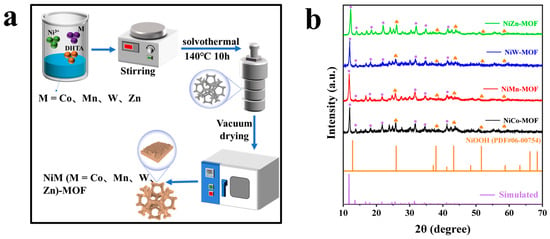
Figure 1
Open AccessReview
Liquid Metal Nanoenergy Systems: Progress and Challenges
by
Yibing Ma, Jianye Gao, Yiyue Tao, Chen Hua, Tangzhen Guan, Cai Cheng, Yujia Song and Jing Liu
Nanoenergy Adv. 2025, 5(4), 16; https://doi.org/10.3390/nanoenergyadv5040016 - 4 Nov 2025
Abstract
►▼
Show Figures
The pursuit of advanced energy technologies has intensified the focus on innovative functional materials. Low-melting-point liquid metals (LMs), particularly Ga-based alloys, have emerged as a promising platform due to their unique combination of metallic conductivity, fluidity, and biocompatibility. Nanoscaling LMs to create nano-liquid
[...] Read more.
The pursuit of advanced energy technologies has intensified the focus on innovative functional materials. Low-melting-point liquid metals (LMs), particularly Ga-based alloys, have emerged as a promising platform due to their unique combination of metallic conductivity, fluidity, and biocompatibility. Nanoscaling LMs to create nano-liquid metals (nano-LMs) further unlocks extraordinary properties, including electrical duality, enhanced surface reactivity, tunable plasmonics, and remarkable deformability, surpassing the limitations of their bulk counterparts. This review provides a comprehensive overview of the recent progress in nano-LM-based energy technology. We begin by delineating the fundamental properties of LMs and the novel characteristics imparted at the nanoscale. Subsequently, we critically analyze mainstream synthesis strategies, such as sonication, mechanical shearing, and microfluidics. The core of the review focuses on innovative applications in energy storage devices, energy harvesting system, and catalysis for energy conversion. Finally, we discuss persistent challenges in stability, scalable synthesis, and mechanistic understanding, while offering perspectives on future research directions aimed at realizing the full potential of nano-LMs in next-generation intelligent and sustainable energy systems.
Full article
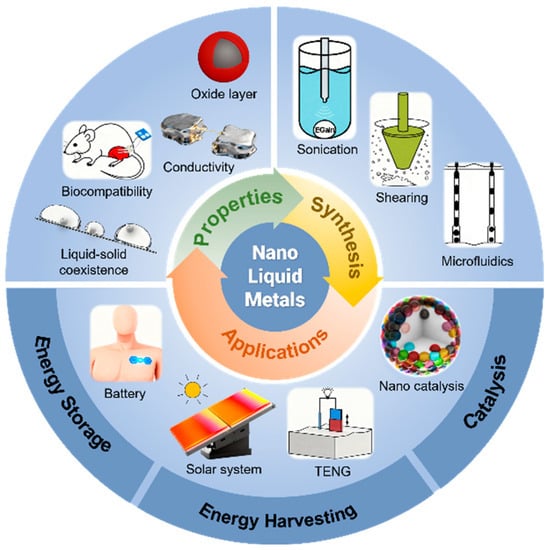
Figure 1
Open AccessArticle
A Layered Electrode Solid–Oil Triboelectric Nanogenerator for Real-Time Monitoring of Oil Leakage and Emulsification
by
Shuyao Li, Yuxuan Lai, Zujian Gong and Huangxuan Zhang
Nanoenergy Adv. 2025, 5(4), 15; https://doi.org/10.3390/nanoenergyadv5040015 - 4 Nov 2025
Abstract
►▼
Show Figures
Real-time monitoring of lubricants is crucial to the development of transport vehicles. Accidental and fatal failures of components in vehicles occur every day, which threaten the service life of equipment. Inspired by the work of solid–liquid triboelectric nanogenerators (S-L-TENG), we propose a method
[...] Read more.
Real-time monitoring of lubricants is crucial to the development of transport vehicles. Accidental and fatal failures of components in vehicles occur every day, which threaten the service life of equipment. Inspired by the work of solid–liquid triboelectric nanogenerators (S-L-TENG), we propose a method to retrofit a self-powered sensor for real-time monitoring of lubricating oil leakage. The previous work does not have a systematic study on the influence of various modification methods on the electrification signal of oil-solid contact. This study identifies an optimal modification method with the highest electrification performance by comparing the energizing signals of different modification methods, which provides a new approach for the real-time monitoring of lubricating oil leakage and the detection of lubricating oil impurities.
Full article

Graphical abstract
Open AccessArticle
Enhanced Performance of TiO2 Composites for Solar Cells and Photocatalytic Hydrogen Production
by
Xue Bai, Jian Chen, Shengxi Du and Yan Xiong
Nanoenergy Adv. 2025, 5(4), 14; https://doi.org/10.3390/nanoenergyadv5040014 - 28 Oct 2025
Abstract
►▼
Show Figures
Titanium dioxide (TiO2) is widely used in solar cells and photocatalysts, given its excellent photoactivity, low cost, and high structural, electronic, and optical stability. Here, a novel TiO2 composite was prepared by coating TiO2 inverse opal (IO) with TiO
[...] Read more.
Titanium dioxide (TiO2) is widely used in solar cells and photocatalysts, given its excellent photoactivity, low cost, and high structural, electronic, and optical stability. Here, a novel TiO2 composite was prepared by coating TiO2 inverse opal (IO) with TiO2 nanorods (NRs). With a porous three-dimensional network structure, the composite exhibited higher light absorption; enhanced the separation of the electron–hole pairs; deepened the infiltration of the electrolyte; better transported and collected charge carriers; and greatly improved the power conversion efficiency (PCE) of the quantum-dot sensitized solar cells (QDSSCs) based on it, while also boosting its own photocatalytic hydrogen generation efficiency. A very high PCE of 12.24% was achieved by QDSSCs utilizing CdS/CdSe sensitizer. Furthermore, the TiO2 composite exhibited high photocatalytic activity with a H2 release rate of 1080.2 μ mol h−1 g−1, several times that of bare TiO2 IO or TiO2 NRs.
Full article

Figure 1
Open AccessReview
Multivalent Metal-Ion Batteries: Unlocking the Future of Post-Lithium Energy Storage
by
Balaraman Vedhanarayanan, Jagadesh Nagaraj, Kishorekumar Arjunan and K. C. Seetha Lakshmi
Nanoenergy Adv. 2025, 5(4), 13; https://doi.org/10.3390/nanoenergyadv5040013 - 14 Oct 2025
Abstract
►▼
Show Figures
The increasing demand for sustainable and high-performance energy storage underscores the limitations of lithium-ion batteries (LIBs), notably in terms of finite resources, safety issues, and rising costs. Multivalent metal-ion batteries (MMIBs)—employing Zn2+, Mg2+, Ca2+, and Al3+
[...] Read more.
The increasing demand for sustainable and high-performance energy storage underscores the limitations of lithium-ion batteries (LIBs), notably in terms of finite resources, safety issues, and rising costs. Multivalent metal-ion batteries (MMIBs)—employing Zn2+, Mg2+, Ca2+, and Al3+ ions—represent promising alternatives, as their multivalent charge carriers facilitate higher energy densities and greater electron transfer per ion. The widespread availability, lower cost, and favorable safety profiles of these metals further enhance MMIB suitability for large-scale deployment. However, MMIBs encounter significant obstacles, including slow ion diffusion, strong Coulombic interactions, electrolyte instability, and challenging interfacial compatibility. This review provides a systematic overview of recent advancements in MMIB research. Key developments are discussed for each system: electrode synthesis and flexible architectures for zinc-ion batteries; anode and cathode innovation alongside electrolyte optimization for magnesium-ion systems; improvements in anode engineering and solvation strategies for calcium-ion batteries; and progress in electrolyte formulation and cathode design for aluminum-ion batteries. The review concludes by identifying persistent challenges and future directions, with particular attention to material innovation, electrolyte chemistry, interfacial engineering, and the adoption of data-driven approaches, thereby informing the advancement of next-generation MMIB technologies.
Full article

Graphical abstract
Open AccessReview
Progress in Cellulose-Based Polymer Ionic Conductors: From Performance Optimization to Strain-Sensing Applications
by
Rouyi Lu, Yinuo Wang, Hao Pang, Panpan Zhang and Qilin Hua
Nanoenergy Adv. 2025, 5(4), 12; https://doi.org/10.3390/nanoenergyadv5040012 - 28 Sep 2025
Abstract
►▼
Show Figures
Intrinsically stretchable polymer ionic conductors (PICs) hold significant application prospects in fields such as flexible sensors, energy storage devices, and wearable electronic devices, serving as promising solutions to prevent mechanical failure in flexible electronics. However, the development of PICs is hindered by an
[...] Read more.
Intrinsically stretchable polymer ionic conductors (PICs) hold significant application prospects in fields such as flexible sensors, energy storage devices, and wearable electronic devices, serving as promising solutions to prevent mechanical failure in flexible electronics. However, the development of PICs is hindered by an inherent trade-off between mechanical robust and electrical properties. Cellulose, renowned for its high mechanical strength, tunable chemical groups, abundant resources, excellent biocompatibility, and remarkable recyclability and biodegradability, offers a powerful strategy to decouple and enhance mechanical and electrical properties. This review presents recent advances in cellulose-based polymer ionic conductors (CPICs), which exhibit exceptional design versatility for flexible electrodes and strain sensors. We systematically discuss optimization strategies to improve their mechanical properties, electrical conductivity, and environmental stability while analyzing the key factors such as sensitivity, gauge factor, strain range, response time, and cyclic stability, where strain sensing refers to a technique that converts tiny deformations (i.e., strain) of materials or structures under external forces into measurable physical signals (e.g., electrical signals) for real-time monitoring of their deformation degree or stress state.
Full article

Figure 1
Open AccessArticle
Morphology-Controlled Polyaniline Nanofibers via Rapid Polymerization for Enhanced Supercapacitor Performance
by
Sami Ur Rahman, Shehna Farooq, Narasimharao Kitchamsetti, Muhammad Sajid, Salma Gul, Fahad Farooq, Muhammad Rafiq, Irum Fatima and Humaira Razzaq
Nanoenergy Adv. 2025, 5(3), 11; https://doi.org/10.3390/nanoenergyadv5030011 - 29 Aug 2025
Cited by 1
Abstract
►▼
Show Figures
Polyaniline (PANI) nanofibers (NFs) were synthesized via two chemical oxidative polymerization approaches: a rapid mixing process and a conventional stirred tank method. PANI is a promising electrode material for supercapacitors due to its conductivity, stability, and pseudocapacitive redox behavior. The rapid mixing route
[...] Read more.
Polyaniline (PANI) nanofibers (NFs) were synthesized via two chemical oxidative polymerization approaches: a rapid mixing process and a conventional stirred tank method. PANI is a promising electrode material for supercapacitors due to its conductivity, stability, and pseudocapacitive redox behavior. The rapid mixing route proved especially effective, as fast polymerization promoted homogeneous nucleation and yielded thin, uniform, and interconnected NFs, whereas conventional stirring produced thicker, irregular fibers through heterogeneous nucleation. Structural characterization (FTIR, UV-Vis, XRD, XPS, TGA) confirmed that both samples retained the typical emeraldine form of PANI, but morphological analyses (SEM, BET) revealed that only the rapid process preserved nanofiber uniformity and porosity. This morphological control proved decisive for electrochemical behavior: symmetric supercapacitor devices fabricated from rapidly synthesized NFs delivered higher specific capacitances (378.8 F g−1 at 1 A g−1), improved rate capability, and superior cycling stability (90.33% retention after 3000 cycles) compared to devices based on conventionally prepared NFs. These findings demonstrate that rapid polymerization offers a simple and scalable route to morphology-engineered PANI electrodes with enhanced performance.
Full article

Graphical abstract
Open AccessArticle
COx-Free Hydrogen Production via CH4 Decomposition on Alkali-Incorporated (Mg, La, Ca, Li) Ni-Al Catalysts
by
Morgana Rosset, Yan Resing Dias, Liliana Amaral Féris and Oscar William Perez-Lopez
Nanoenergy Adv. 2025, 5(3), 10; https://doi.org/10.3390/nanoenergyadv5030010 - 30 Jul 2025
Abstract
The catalytic decomposition of CH4 is a promising method for producing high-purity COx-free hydrogen. A Ni-Al-LDH catalyst synthesized via coprecipitation was modified with alkali metals (Mg, La, Ca, or Li) through reconstruction to enhance catalytic activity and resistance to deactivation
[...] Read more.
The catalytic decomposition of CH4 is a promising method for producing high-purity COx-free hydrogen. A Ni-Al-LDH catalyst synthesized via coprecipitation was modified with alkali metals (Mg, La, Ca, or Li) through reconstruction to enhance catalytic activity and resistance to deactivation during catalytic methane decomposition (CMD). The catalysts were evaluated by two activation methods: H2 reduction and direct heating with CH4. The MgNA-R catalyst achieved the highest CH4 conversion (65%) at 600 °C when reduced with H2, attributed to a stronger Ni-Al interaction. Under CH4 activation, LaNA-C achieved a 55% conversion at the same temperature, associated with a smaller crystallite size and higher reducibility due to La incorporation. Although all catalysts deactivated due to carbon deposition and/or sintering, LaNA-C was the only sample that could resist deactivation for a longer period, as La appears to have a protective effect on the active phase. Post-reaction characterizations revealed the formation of graphitic and filamentous carbon. Raman spectroscopy exhibited a higher degree of graphitization and structural order in LaNA-C, whereas SEM showed a more uniform distribution of carbon filaments. TEM confirmed the presence of multi-walled carbon nanotubes with encapsulated Ni particles in La-promoted samples. These results demonstrate that La addition improves the catalytic performance under CH4 activation and carbon structure. This finding offers a practical advantage for CMD processes, as it reduces or eliminates the need to use hydrogen during catalyst activation.
Full article
(This article belongs to the Special Issue Novel Energy Materials)
►▼
Show Figures

Graphical abstract
Open AccessCommunication
Influence of MWCNT Concentration on Performance of Nylon/MWCNT Nanocomposite-Based Triboelectric Nanogenerators Fabricated via Spin Coating Method
by
Talia Tene, Orkhan Gulahmadov, Lala Gahramanli, Mustafa Muradov, Jadranka Blazhevska Gilev, Telli Hamzayeva, Shafag Bayramova, Stefano Bellucci and Cristian Vacacela Gomez
Nanoenergy Adv. 2025, 5(3), 9; https://doi.org/10.3390/nanoenergyadv5030009 - 7 Jul 2025
Cited by 5
Abstract
►▼
Show Figures
This work reports the fabrication and optimization of nylon/multi-walled carbon nanotube (MWCNT) nanocomposite-based triboelectric nanogenerators (TENGs) using a spin coating method. By carefully tuning the MWCNT concentration, the device achieved a substantial enhancement in electrical output, with open-circuit voltage and short-circuit current peaking
[...] Read more.
This work reports the fabrication and optimization of nylon/multi-walled carbon nanotube (MWCNT) nanocomposite-based triboelectric nanogenerators (TENGs) using a spin coating method. By carefully tuning the MWCNT concentration, the device achieved a substantial enhancement in electrical output, with open-circuit voltage and short-circuit current peaking at 29.7 V and 3.0 μA, respectively, at 0.05 wt% MWCNT loading on the surface of nylon. The corresponding power density reached approximately 13.9 mW/m2, representing a significant improvement over pure nylon-based TENGs. The enhanced performance is attributed to improved charge trapping and dielectric properties due to well-dispersed MWCNTs on the surface of nylon, while excessive loading caused agglomeration, reducing efficiency. This lightweight, flexible nanocomposite TENG offers a promising solution for efficient, sustainable energy harvesting in wearable electronics and self-powered sensor systems, highlighting its potential for practical energy applications.
Full article

Figure 1
Open AccessArticle
Innovative Vapor Transport Deposition Technique for Selenium Thin-Film Solar Cell Fabrication
by
Jie Wang, Fan He and Min Zhang
Nanoenergy Adv. 2025, 5(2), 8; https://doi.org/10.3390/nanoenergyadv5020008 - 16 Jun 2025
Abstract
►▼
Show Figures
The recent focus on wide-bandgap absorbers for tandem solar cell configurations and photovoltaic materials with high absorption coefficients for indoor photovoltaics has prompted a renewed interest in selenium. Over the past few years, the efficiency of Se solar cells has improved significantly, bringing
[...] Read more.
The recent focus on wide-bandgap absorbers for tandem solar cell configurations and photovoltaic materials with high absorption coefficients for indoor photovoltaics has prompted a renewed interest in selenium. Over the past few years, the efficiency of Se solar cells has improved significantly, bringing the prospect of industrial production closer to reality. This study presents an innovative vapor transport deposition (VTD) technique for the scalable and cost-effective fabrication of Se thin films. The prepared Se thin films were characterized, and the results show that the VTD method is capable of producing dense and well-crystallized Se thin films. Se solar cells with a structure of glass/FTO/TiO2/Se/Au were fabricated to evaluate the impact of substrate temperature on device performance. The optimal performance was achieved on the hot side of the substrate during deposition, with a power conversion efficiency (PCE) of 2.56%. This study provides a promising pathway for the low-cost, high-throughput manufacturing of high-performance Se solar cells, facilitating their potential industrial implementation.
Full article

Figure 1
Open AccessArticle
A CMOS-Based Power Management Circuit with a Reconfigurable Rectifier and an LDO Regulator for Piezoelectric Energy Harvesting in IoT Applications
by
Suany E. Vázquez-Valdés, Primavera Argüelles-Lucho, Rosa M. Woo-García, Edith Osorio-de-la-Rosa, Francisco López-Huerta and Agustín L. Herrera-May
Nanoenergy Adv. 2025, 5(2), 7; https://doi.org/10.3390/nanoenergyadv5020007 - 14 May 2025
Cited by 2
Abstract
►▼
Show Figures
The technological advances in internet of things (IoT) devices have raised the demand for cost-efficient and sustainable energy sources. Piezoelectric energy harvesters (PEHs) are promising low-cost and eco-friendly energy sources but require robust power management circuits (PMCs) for voltage conversion and regulation. This
[...] Read more.
The technological advances in internet of things (IoT) devices have raised the demand for cost-efficient and sustainable energy sources. Piezoelectric energy harvesters (PEHs) are promising low-cost and eco-friendly energy sources but require robust power management circuits (PMCs) for voltage conversion and regulation. This work presents a complementary metal–oxide–semiconductor (CMOS)-based PMC, integrating a reconfigurable AC-DC rectifier and a low-dropout (LDO) voltage regulator designed using 0.18 µm Taiwan semiconductor manufacturing company (TSMC) CMOS technology. This design includes an intermediate coupling stage to reduce voltage drop and improve the transfer efficiency of the PMC. In addition, we develop numerical simulations of the PMC performance, achieving a voltage conversion efficiency (VCE) between 72.8% and 43.21% using input voltages from 0.7 V to 2.8 V with a 50 kΩ load resistance. Compared to previous designs, the proposed circuit demonstrates improved stability, reduced area (66.28 mm2), and extended operating voltage range, allowing its potential application for ultra-low-power IoT nodes. This PMC contributes to the development of autonomous systems with reduced battery dependency and enhanced sustainability.
Full article

Figure 1
Open AccessFeature PaperReview
Borocarbonitrides for Decarbonization: From CO2 Utilization to Renewable Fuel Synthesis
by
Carlos A. Castilla-Martinez, Perla C. Meléndez-González and Umit B. Demirci
Nanoenergy Adv. 2025, 5(2), 6; https://doi.org/10.3390/nanoenergyadv5020006 - 9 Apr 2025
Cited by 2
Abstract
Borocarbonitrides (BCNs), a new class of ternary materials combining boron, carbon, and nitrogen atoms, have emerged as promising candidates in decarbonization technologies due to their unique physicochemical properties. BCNs offer an adjustable atom composition and electronic structure, thermal stability, and potentially a large
[...] Read more.
Borocarbonitrides (BCNs), a new class of ternary materials combining boron, carbon, and nitrogen atoms, have emerged as promising candidates in decarbonization technologies due to their unique physicochemical properties. BCNs offer an adjustable atom composition and electronic structure, thermal stability, and potentially a large specific surface area, which are attractive features for efficient interactions with carbon dioxide. These make BCNs suitable for carbon dioxide capture, storage, and catalytic conversion applications. Furthermore, BCNs have the potential to (electro)catalyze the synthesis of green fuels, such as hydrogen, as well as that of other hydrogen carriers such as ammonia. With this review, we examine the recent advances in BCN synthesis methods, characterization, and functional applications while focusing on their role in the decarbonization technologies mentioned above. We aim to highlight the potential of BCNs to drive innovation in sustainable carbon management. Additionally, in the last section of this paper, we discuss the challenges and prospects of BCNs in decarbonization and beyond.
Full article
(This article belongs to the Special Issue Novel Energy Materials)
►▼
Show Figures
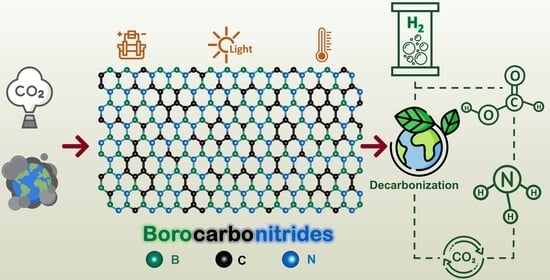
Graphical abstract
Open AccessArticle
Enhanced Room-Temperature Hydrogen Physisorption in Zeolitic Imidazolate Frameworks and Carbon Nanotube Hybrids
by
Syedvali Pinjari, Tapan Bera and Erik Kjeang
Nanoenergy Adv. 2025, 5(2), 5; https://doi.org/10.3390/nanoenergyadv5020005 - 3 Apr 2025
Cited by 2
Abstract
In this work, zeolitic imidazolate frameworks (ZIF-8, ZIF-67, and ZC-ZIF) and their hybrid composites with carboxylate-functionalized carbon nanotubes (fCNTs) are synthesized through low-cost synthesis methods for enhanced physisorption-based hydrogen storage at room temperature. While both base and hybrid structures are designed to improve
[...] Read more.
In this work, zeolitic imidazolate frameworks (ZIF-8, ZIF-67, and ZC-ZIF) and their hybrid composites with carboxylate-functionalized carbon nanotubes (fCNTs) are synthesized through low-cost synthesis methods for enhanced physisorption-based hydrogen storage at room temperature. While both base and hybrid structures are designed to improve hydrogen uptake, the base materials exhibit the most notable performance compared to their carbon hybrid counterparts. The structural analysis confirms that all samples maintain high crystallinity and exhibit well-defined rhombic dodecahedral morphologies. The hybrid composites, due to the intercalation of fCNTs, show slightly larger particle sizes than their base materials. X-ray photoelectron spectroscopy reveals strong nitrogen–metal coordination in the ZIF structures, contributing to a larger specific surface area (SSA) and optimal microporous properties. A linear fit of SSA and hydrogen uptake indicates improved hydrogen transport at low pressures due to fCNT addition. ZIF-8 achieves the highest SSA of 2023.6 m2/g and hydrogen uptake of 1.01 wt. % at 298 K and 100 bar, with 100% reversible adsorption. Additionally, ZIF-8 exhibits excellent cyclic repeatability, with only 10% capacity reduction after five adsorption/desorption cycles. Kinetic analysis reveals that hydrogen adsorption in the ZIF materials is governed by a combination of surface adsorption, intraparticle diffusion, and complex pore filling. These findings underscore the potential of ZIFs as superior materials for room-temperature hydrogen storage.
Full article
(This article belongs to the Topic Hydrogen Energy Technologies, 2nd Edition)
►▼
Show Figures

Graphical abstract
Highly Accessed Articles
Latest Books
E-Mail Alert
News
Topics
Topic in
Energies, Fibers, Micromachines, Molecules, Nanoenergy Advances
Advances on the Application of Nanomaterials and 2D Materials for Sensors, Solar Cells, Microelectronics, and Optoelectronics
Topic Editors: Alessia Irrera, Antonio Alessio LeonardiDeadline: 31 December 2025
Topic in
Applied Sciences, Energies, Materials, Micromachines, Nanoenergy Advances, Sensors
Advanced Energy Harvesting Technology, 2nd Edition
Topic Editors: Mengying Xie, Kean C. Aw, Junlei Wang, Hailing Fu, Wee Chee GanDeadline: 30 June 2026
Topic in
Applied Sciences, Energies, Materials, Nanoenergy Advances, Nanomaterials
Nanomaterials for Energy and Environmental Applications, 2nd Edition
Topic Editors: Robert A. Varin, Tao ChenDeadline: 31 October 2026

Conferences
Special Issues
Special Issue in
Nanoenergy Advances
Hybrid Energy Storage Systems Based on Nanostructured Materials
Guest Editor: Verónica Montes GarcíaDeadline: 30 June 2026
Special Issue in
Nanoenergy Advances
Innovative Materials for Renewable and Sustainable Energy Systems
Guest Editors: Carmen M. Rangel, Joao Ventura, Elby TitusDeadline: 31 December 2026



